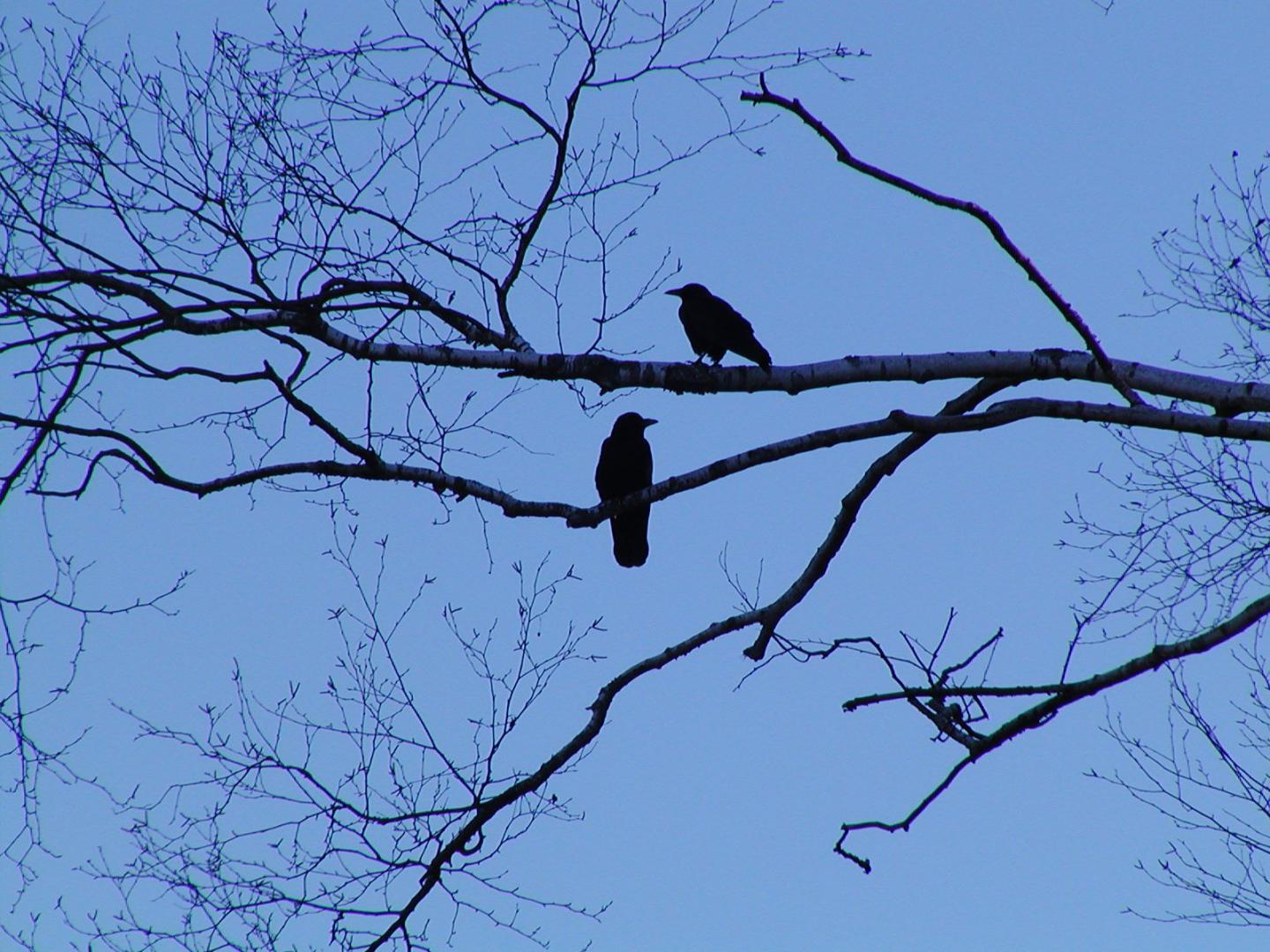
On Being Nature’s Steward
My father loved reptiles and passed his interest on to my brother and me. In hindsight I’m not sure but there may be some deep symbolism in his affection for these cold blooded creatures. He grew up in a hugely dysfunctional family that he rarely spoke about and never connected with. One of my father’s funny quips was “is dysfunctional family redundant?” A little harsh, but still pretty funny. So if his family was such a cold and uncaring mess, was his connection to reptiles and amphibians a kind of recreation of the familiar? The reptilian world is curious and interesting but hardly warm and fuzzy. It is true that my boa constrictor Elsie that I had when I was seven or eight liked to wrap her seven foot long body around me. She would curl around me and fall asleep. I pretended that it was affection but I suspect it had more to do with the fact that I felt warm and safe. Reptiles are known for their practicality; not their well developed emotional self-actualization.
Growing up with my father meant you learned at an early age how to catch snakes, turtles, salamanders and other members of the reptile and amphibian community. We lived in the Fenway neighborhood of Boston and didn’t have much, including a car. When I was five or six I sat on the handlebars (I know, a safety nightmare) of an old three speed bike my father found in the trash. I held onto the long handled fishing net and pillowcases to transport our catches while he pedaled. One of our regular pilgrimages was to Houghton’s pond in Milton about twelve miles away. It had to have taken an hour and a half each way. Sitting on the handlebars of that rickety old bike and going “turtling” with my father is one of the sweetest memories of my childhood.
My father found an old bathtub and set it in the ground behind our apartment building on Gainsborough Street. For their safety, the turtles lived in fish tanks in our apartment. But on nice days we took them out back and let them play in the roomier tub. There were rocks, a log and aquatic plants in the tub. My brother and I, along with other neighborhood kids, would catch flies and feed them to the hungry turtles. In the picture below (taken in 1959), my brother is on the left, friend Dickie Madison in the middle and I’m crawling under the window. It looks like there are five eastern painted turtles and the turtle looking at me appears to be a prized spotted turtle.
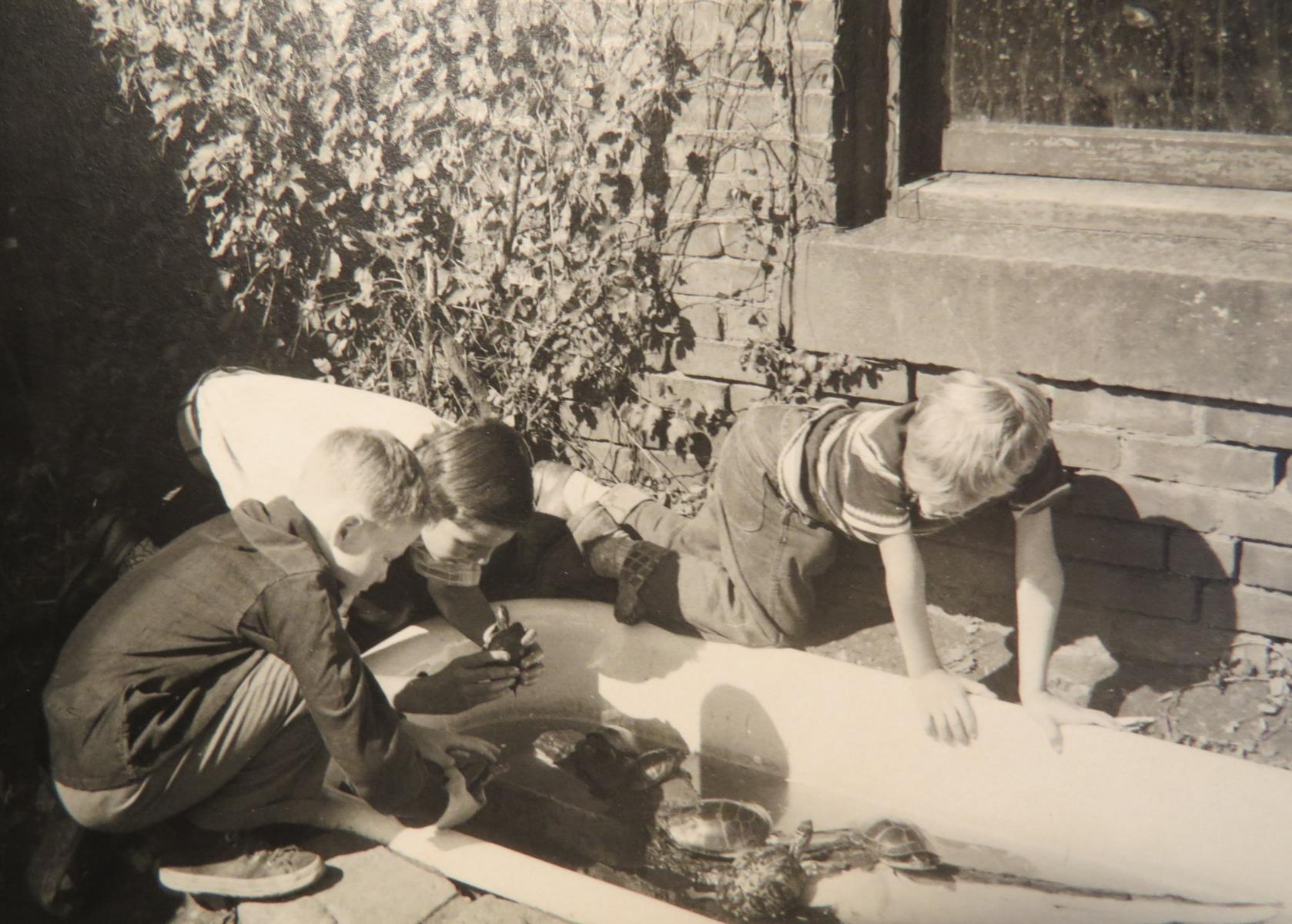
Catch and release, do no harm. We might keep a snake, turtle or whatever for a while; but eventually they were released back to where they came from. While in our care their needs were well met. My father was an amateur naturalist, an environmentalist before the word came into vogue. He also recycled paper and glass; he even soaked stamps off of envelopes (he corresponded with a lot of people doing his research), dried them and sold them (hundreds at a time) to a philatelist’s shop. I think some of this was his vision of a better world; some was the result of growing up in grinding poverty. Nonetheless, I was taught to appreciate and care for the natural world around me.
In 2012 I was teaching at a fire department along the Massachusetts border. Before class (I’m always early) I was wandering around behind the firehouse in a field and found an eastern box turtle. This is not a common turtle and it is a terrestrial one who spends very little time in the water. It is a true turtle but looks like and behaves like a tortoise. I had a digital camera in my truck and took a couple of pictures. The next day I called NH Fish and Game to report what I had found. Turns out Fish and Game has a staff biologist who is a herpetologist (a reptile and amphibian scientist) named Michael Marchand. He listened to my story, was polite but clearly skeptical. He informed me that there were no documented cases of eastern box turtles in NH at that time. He asked if I had taken a picture, I emailed it to him and he called back a few minutes later and with a very different attitude. He apologized for his skepticism and thanked me for reaching out.
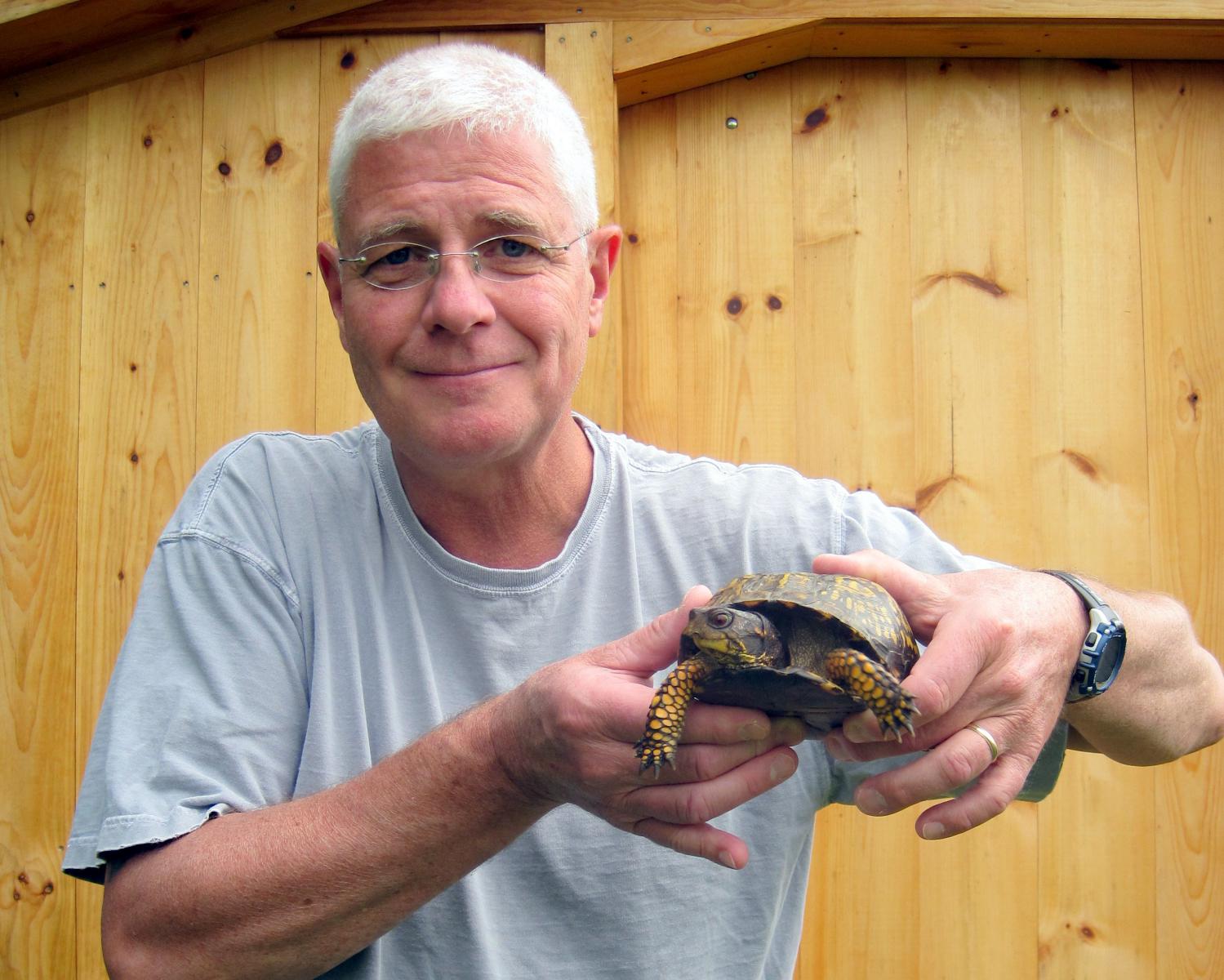
My Unexpected Catch
Michael asked if I thought I could find and capture the turtle again. I said I thought I could and he emailed me a proclamation on Fish and Game letterhead authorizing me capture the turtle and bring it home. Proclamation in hand and safe from the turtle secret police; I collected the turtle. Michael came to my house and photographed and measured the turtle and attached a radio transmitter to his shell. We returned the turtle to its habitat and Michael went from time to time to track him. We kept in contact for a few years and then lost touch.
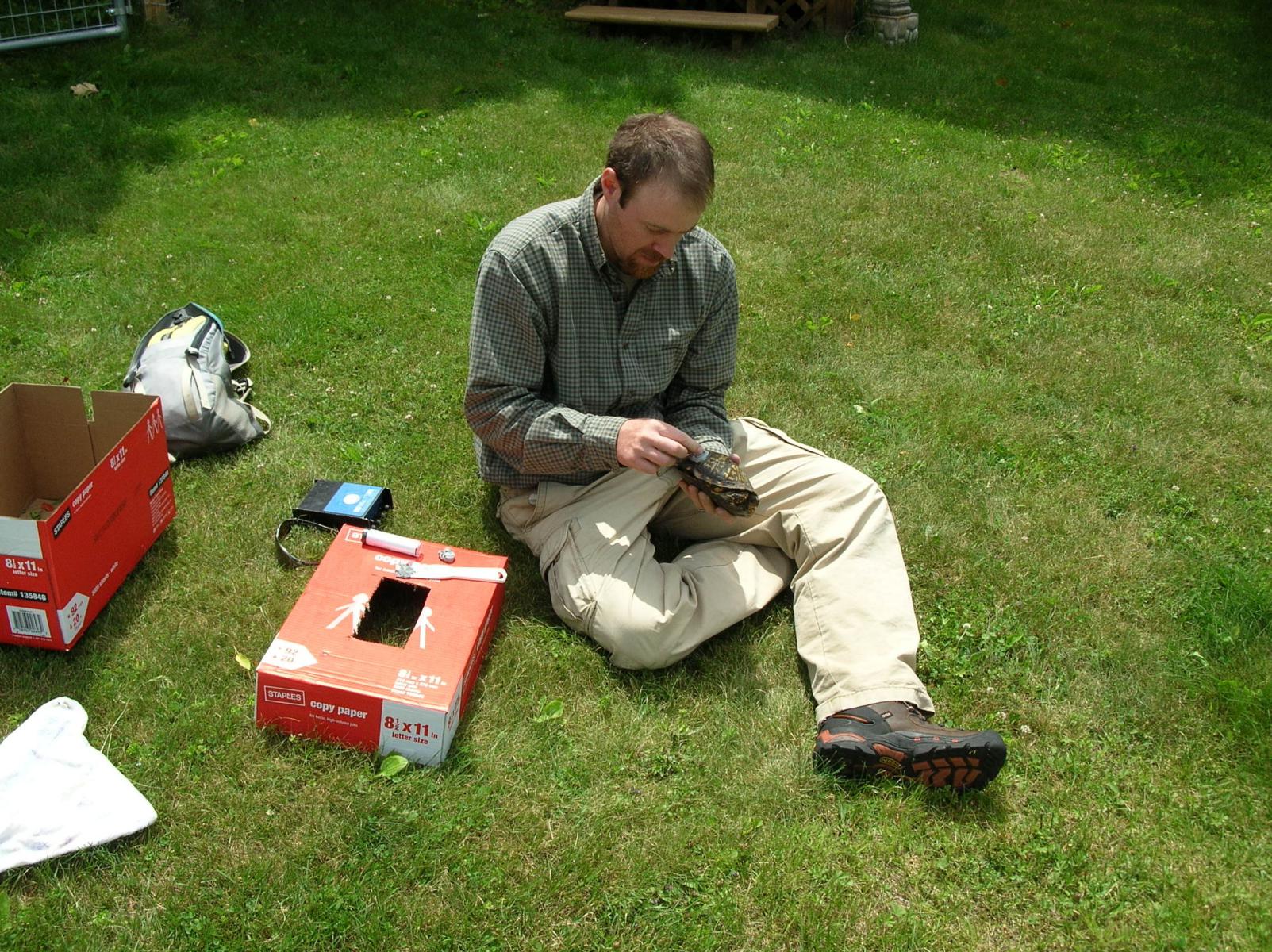
Mike Marchand Attaching the Transmitter
Did this box turtle really find its way further north in the time of global warming? Or, was it a pet that got released or escaped? We will never know. But what I do know is that NH had its first documented eastern box turtle. A comment about the global warming and its influence on where animals are found today is in order. A year ago I had a new bird, clearly a wren, at my winter feeders. I looked it up in my Peterson’s field guide and easily identified it as a Carolina wren. The problem was they don’t belong here, we are too far north. I called my brother who is a hard core birder. He confirmed that they have been steadily moving northward for a couple of decades and could easily be in my yard. Then he asked how old my field guide was. I had to look; it was a 1984 edition, nearly forty years old. He dryly observed that it might be time for an upgrade.
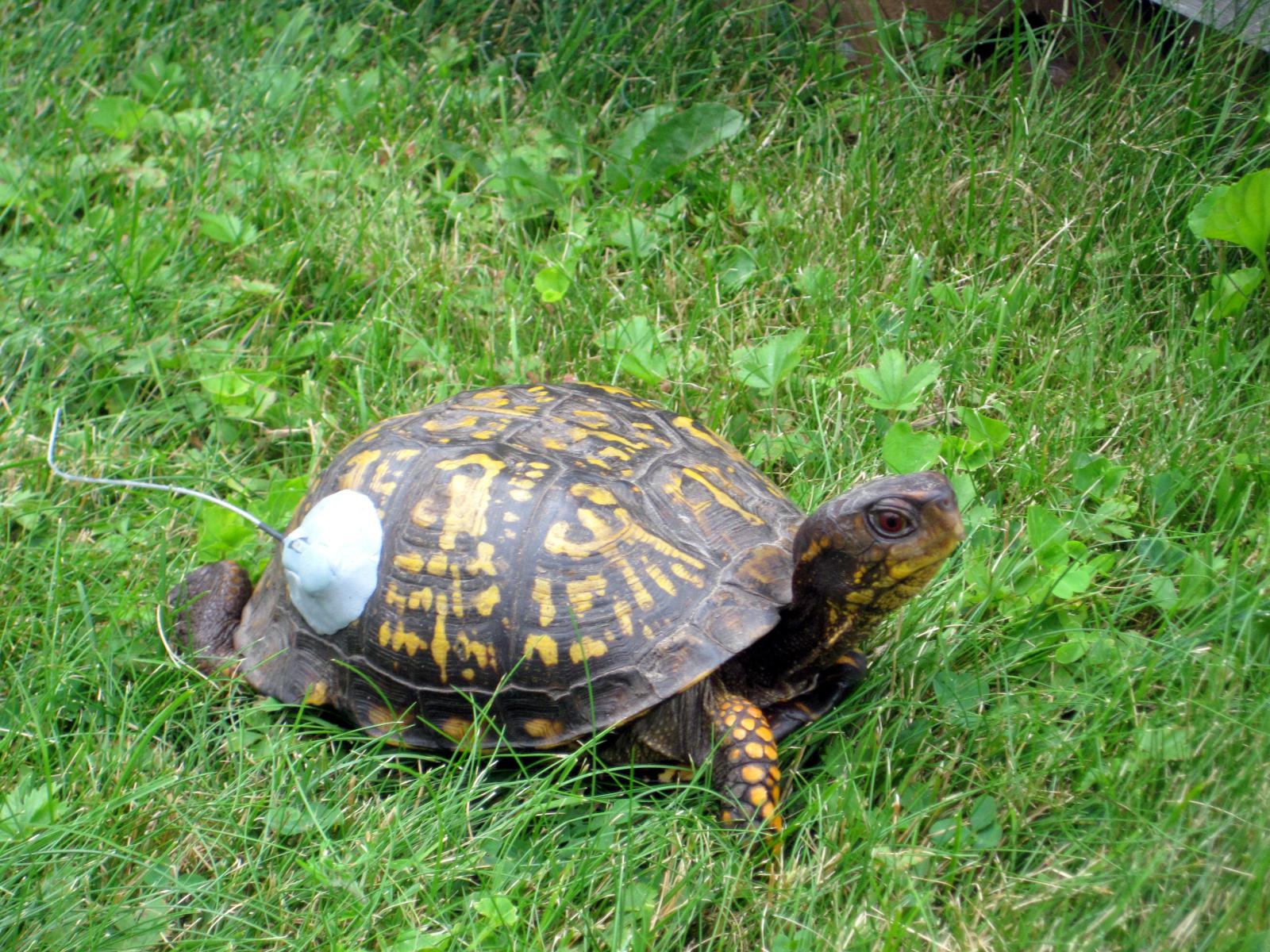
Ready for Release with the Transmitter Safely Installed
This spring I was out running and came upon a wood turtle crossing the road. I helped her across (always in the direction they are heading) so she would not get hit. If you turn a turtle around they will turn around again and try to cross for a second time. They are going to go the direction they were headed. And I say she because most turtles on the move in spring are females heading to or returning from egg laying. A resident, Paul Haupt-Renaud who knows me, was driving by stopped to see what I was doing. He knew nothing of the wood turtle (another beautiful and rare terrestrial turtle) or the rules for crossing them. He was very attentive and curious and patiently listened to my wood turtle tutorial. He took a picture with his cell phone which was great and emailed it to me later. I know it’s kind of nerdy and square but this kind of community involvement is important to my way of thinking. Not only did I help safely cross the turtle but now Paul learned about them and they have gained another admirer and supporter.
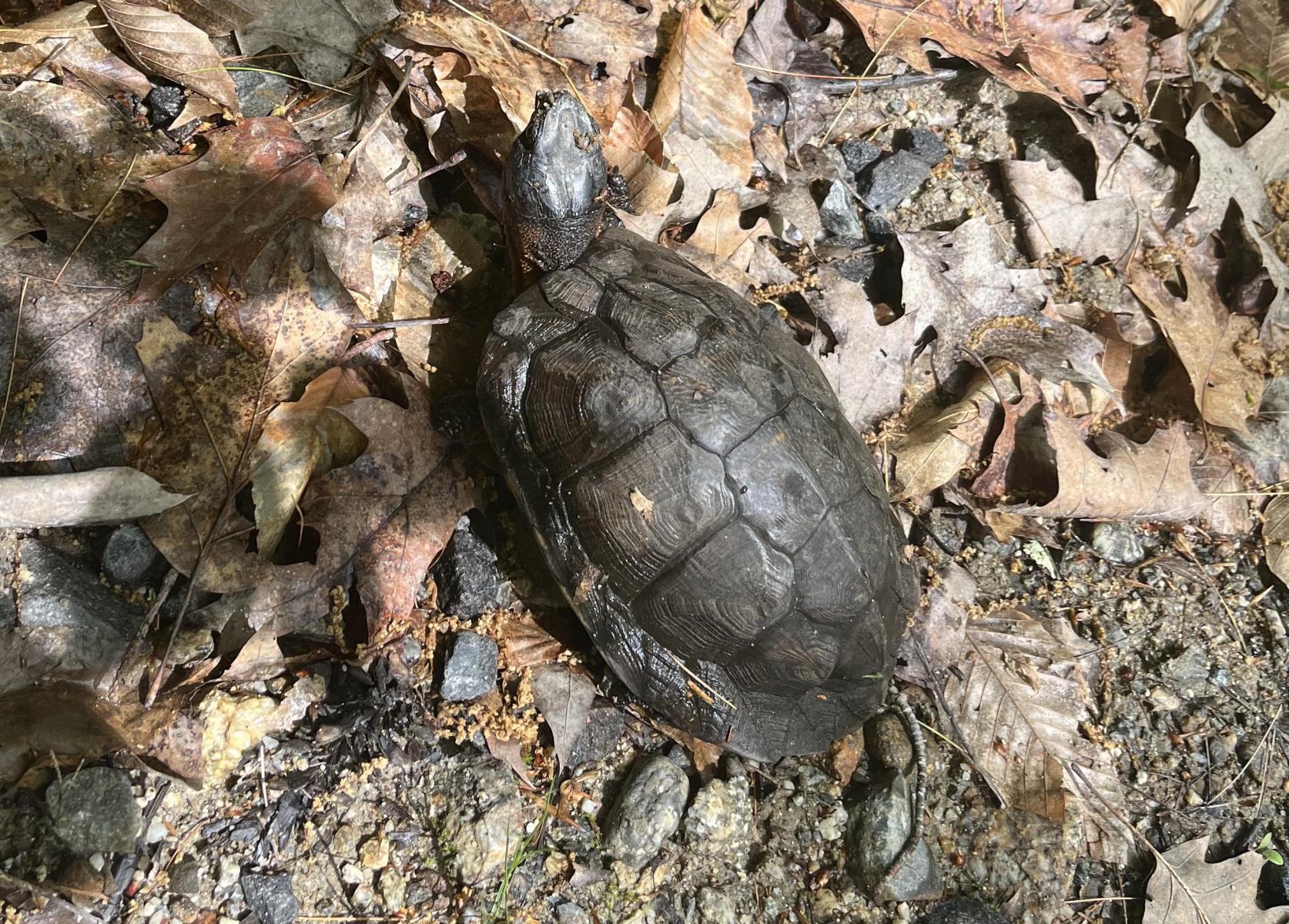
The Wood Turtle
I got home and fired off an email to Michael Marchand. It went to the effect of “I don’t know if you remember me and the box turtle ten years ago… and now I have seen a wood turtle. He did remember; wanted and exact location of the turtle and wondered if by chance I got a picture. I sent the location and Paul’s picture. Wood turtles are on the threatened species list and are becoming rarer. Automobile strikes are a big part of the problem. The information I sent Michael went into Fish and Game’s database. These are the smallest of actions but still important. The more of us who make reports like this the greater knowledge will be accumulated by the scientific community… we can all help.
Thirty years ago (I think it was 1990); I found a fisher (road kill) in excellent condition. For the record since it irritates me, fishers are not felines, not fisher cats as they are commonly referred to in this part of the world. They are mustelids, members of the weasel family. They are big weasels and like all weasels, ferocious hunters. Although my fisher wasn’t all that big, as you can see in the picture below he was about three feet nose to tail (for reference, I’m 6’4”). Still, that’s a big weasel. Fishers prey on hares, porcupines, squirrels, house cats and many other species. It had a broken and bloody nose but was otherwise undamaged. I put it in my truck and brought it home where I was living in Westford MA. I called the Museum of Science in Boston and they were at my house in a couple hours to pick up the fisher. One of their taxidermists prepared the specimen and it was placed in one of their exhibits. Again, we can all help. This unfortunate event resulted in some good, a chance for the public to see a real fisher.
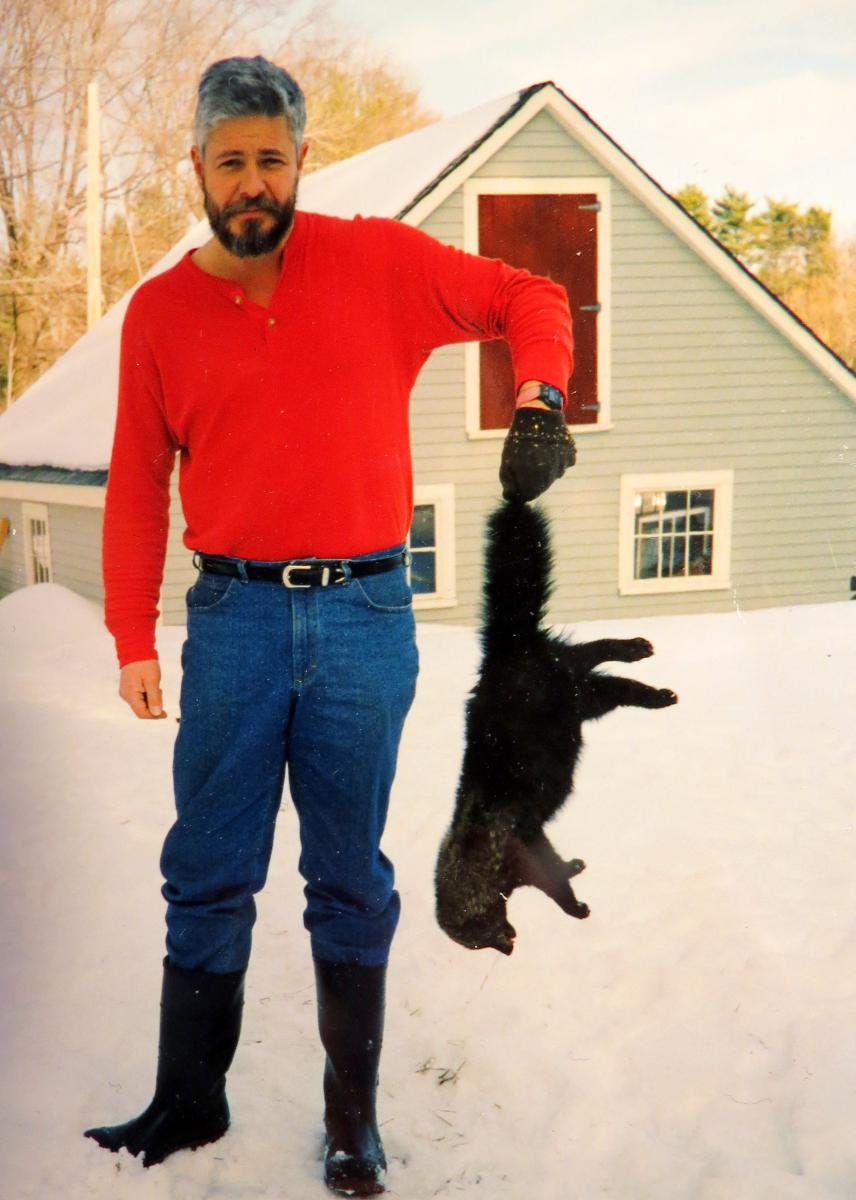
The Fisher
Public awareness and education is one of the best ways to insure the diversity and survival of species. Many people are simply not aware of the dangers and threats to many species. We all should be nature’s stewards. Every time a credible sighting is reported or a carcass identified; it adds to the database. You don’t need to pick up dead animals and put them in your trunk if you don’t want to. Take a picture with your cell phone, note your exact location and call Fish and Game. It really helps. A good picture is the key. Fish and Game gets a lot of calls about critters that probably aren’t here and some that don’t even exist. They may well politely challenge the authenticity your claim. Don’t be offended; send them what you got. I’ve said this elsewhere… I grew up in the generation that was fond of saying “if you are not part of the solution, you are part of the problem”. I still take that to heart.

Hi David,
I enjoyed that lovely article. It brought me back to my 4 year old self, to memories of my older brothers’ (metal) turtle tub in our backyard, which bordered a fabulous little swamp in Weymouth MA.
Have a great weekend!
Jason
Hi Jason:
Thank you so much, what a wonderful comment. I’m glad this took you back to such a good time in your childhood. It’s nice to hear that so many of us have connected with the natural world across our lifetimes. You have a great weekend as well!
David
Hi David,
What a wonderful story and with pictures too! Turtles are becoming more rare all the time. Reptiles and amphibians are on the decline so educating anyone who will listen is important.
Thank you,
Karen
Hi Karen:
Thank you very much for your lovely comment. And yes, I wholeheartedly agree with the part about educating anyone who will listen.
Thanks again,
David
Hi David,
Terrific article!!!!
Reminds me too of my childhood in a 3 decker in Attleboro. We lived outdoors (not literally)! We explored along a river that ran behind our back yard. One day we decided (all 5 of us kids) to try and catch as many frogs as we could… total when we stopped catching them & putting them in our bathtub INDOORS! All 25 of them!!! We went back out exploring & playing.
Sometime later, we went into the house to check on them… there were very few left in the tub!!! We panicked as there was a wide gap at the door to dad’s bedroom. We searched thoroughly… floor, under the bedding, closet, etc. Not a frog in sight. We returned to the bathroom and noticed the window was cracked open (no screen). We opened it further and looked down the long path between our house & the next-door neighbor’s… a trail of frogs was wending its way back down to the river!!!! We quickly released the rest of the captive ones!!!!
And a current nature wonder moment… Will send you pics of the mother turkey who landed on my back deck railing with 3 of her babies. Two more joined them pretty quickly. But one poor, undersized one was on the deck floor. I was sitting at a desk in my kitchen at the window looking out onto the deck. I was stunned! (I had seen over 40 turkeys deeper into the more wooded area of my back yard over the winter, along with 7 deer). This newest sighting was June 3rd! The mother and 5 babies were facing inward onto the deck, except the one farthest from the mom. It kept turning outwards. Maybe a statement of “Can we go now, Mom; can we go now? The littlest on the deck huddled there. I carefully & slowly raised my phone. She knew I was watching, but settled in to preening, as did the rail & deck ones. For about 15 minutes, I had the glorious experience of watching them. Mom then turned outward; her babies followed. She took off, as did the rail ones. The littlest was still on the deck.
I was like: “Oh NO, mom, don’t leave that baby here! Please! I have no idea how to take care of it. The littlest skittered across the deck toward the rail and easily fit between two rails and took off, wings spread!!!
I believe she was teaching them to fly to lower tree limbs, but knew the littlest wasn’t going to make it that high. She chose a rail right at the stairs down to the back yard. And that littlest one could make it to the deck, safe! I was on cloud 9 for days!!!!
Hi Pam:
So nice to hear about people taking the time to appreciate nature around them. Glad to hear your turkey visit ended well. As for your frog story, I think all of us who have collected animals have had to deal with escapees, I know I certainly have. Thanks for your kind words and take care.
David